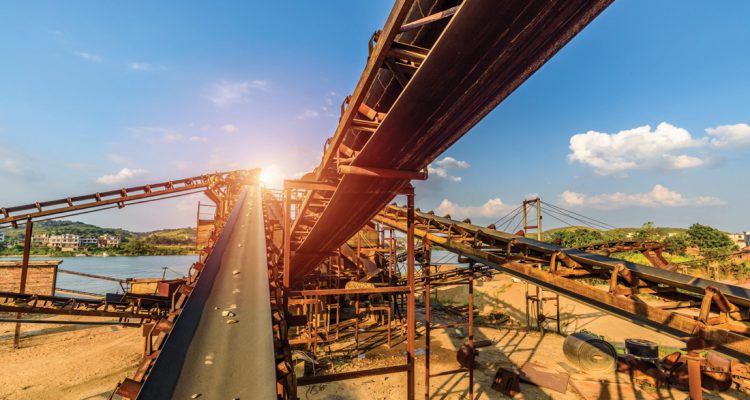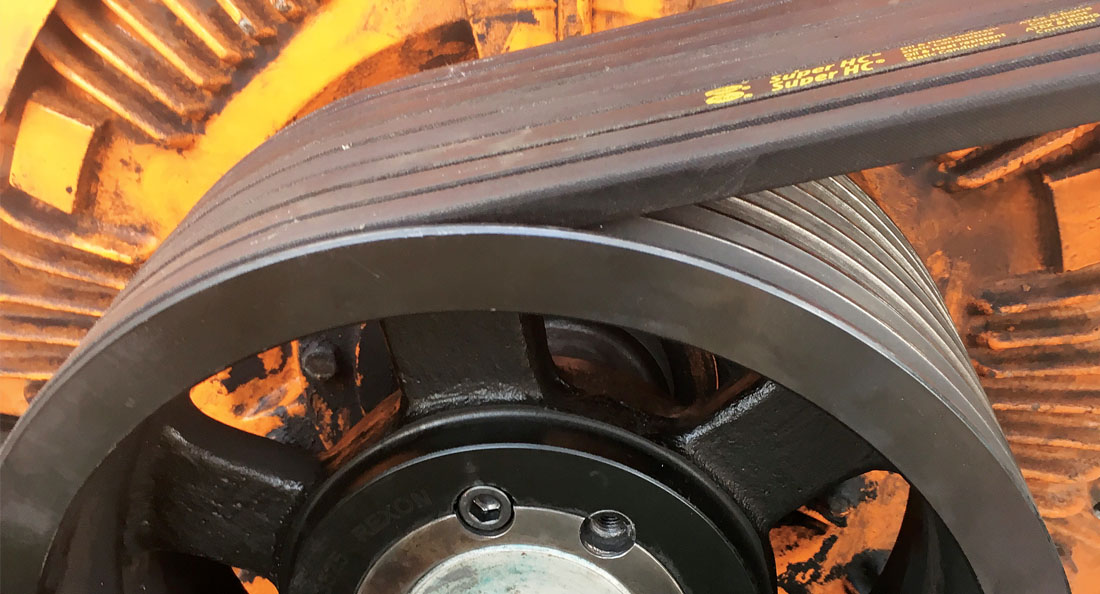When questioned about the most common causes of belt failures in belt drive systems, industry expert Derek Hill quickly responds with “misaligned pulleys and incorrect belt tensioning.”
“A lot of belt failures start right from the moment that the belts are installed. Misalignment in the pulleys and incorrect tensioning are major causes of why belts fail,” says Derek, who is the National Sales Manager – Industrial at Gates.
“This might sound funny but one of the biggest misconceptions about belt installation is that tensioning doesn’t matter. There are a lot of fitters out there who will just over-tighten the drive because that’s what they have always done.”
Derek’s advice for tensioning the belts correctly is to use the correct tools.
“The key is to use the correct tool. Don’t just push down a belt to see if it’s nice and tight. There are various tensioning gauges available for measuring the belts’ elongation, right from the basic gauges up to digital gauges and even sonic wave tensioning devices that pick up belt frequencies when you push and release the belt.
“Another thing to avoid is installing new belts into well-worn pulleys. You can check your pulley groove wear quickly and easily by using a set of Gates Pulley Gauges. Worn pulleys will lead to belts wearing and potentially failing a lot quicker.”
For applications where frequent start and stops in the machine can lead to belt slip and subsequent wear to the pulley, Derek recommends considering premium Gates belts such as the Gates Predator® wrapped v-belts.
“When there is a lot of stop and start in the machine, such as in quarry crushers or example, you don’t want to have any unwanted slippage in the belts beyond the initial slippage at the start-up. Belt slips lead to higher temperatures in the belt and cause a lot more pulley wear. Therefore, in addition to shorter belt life, you end up changing pulleys more frequently, which can be a lot more expensive than changing belts.”
The Gates Predator® belts are heavy-duty v-belts with aramid tensile cords in their construction, which in addition to higher strength, make the belt stretch-free. As such, these belts do not require any re-tensioning after their initial installation.
“The construction is one of the biggest things about the Predator® v-belt,” says Derek. “These v-belts are essentially maintenance-free as they don’t stretch. They are also supplied as matched sets, so you do not need to worry about different belt lengths. Because the aramid cords do not elongate when they heat up, you can simply tension and align a Predator® v-belt at the start and then have a set-and-forget drive.”
A ‘set-and-forget’ drive solution was exactly what a lime quarry in New South Wales was looking for when they contacted their trusted industrial suppliers, BSC, to help them reduce the maintenance hassle for their blower drive.
Matt Thornton, Major Account Manager at BSC, says he recommended the Gates Predator® as a maintenance-free and cost-effective solution.
“Our customer is a major lime producer and they use a powerful blower drive to convey lime out of their aglime plant via pneumatic conveying. This is a critical equipment as there are no alternatives for it on the plant and without it, lime cannot be shipped to load the trucks. They were looking to reduce the time that they had to spend on re-tensioning the belts. We suggested the Gates Predator® v-belts, which they had never tried before. These belts do not require re-tensioning, which is what they were looking for. Additionally, the rubber compound used in the premium Gates v-belts is of a higher standard than the rubber in conventional v-belts, so it offers better heat resistance. These v-belts are also designed to allow for momentary slippage during overloads, without damaging the belt.”
And the belts have already proven to be more cost-effective and durable than the plant had hoped for, according to Matt.
“It is true that the initial cost of premium v-belts is higher, but this is offset by the long-term saving on maintenance. For example, the lime quarry already had an incident where their drive locked up and spun the pulleys against the v-belts. But the v-belts were still able to run after the machine had failed and the belts had slipped. Our customer has been so happy with the performance that they have started using premium belts in their mill drives, fans and hammer mills as well.”
BSC and Gates work closely to offer on-site training programmes to maintenance professionals across different industries, including mines and quarries. These programmes, as Matt explains, can be customised to fit every industry’s requirements.
“These programmes are a good opportunity for us to go through different types of belts and explain the best practices for the installation and maintenance of belt drives. BSC offers these either together with Gates or independently and the programme can be tailored to fit every customer’s needs,” he concludes.
Sonic Tension Meter 508C
Belts, like strings, vibrate at a particular natural frequency based on mass and span length. Gates’ unique Sonic Tension Meter simply converts this frequency into a measurement of tension.
Here’s how it works:
First, enter belt mass constant, belt width and span length into meter using built-in keypad.
Next, hold meter sensor to belt span, then lightly strum belt to make it vibrate. Press “measure” button to obtain reading and the meter quickly converts vibrations into belt tension.
Readings are displayed on a liquid-crystal screen.
Miner Maddie’s Hot Tips:
• Don’t use the old ‘thumb’o’meter’ to measure the belt’s tension. Use the right tools.
• Don’t put your idler back to the same position when you install a new belt.
It will over-stretch it.




